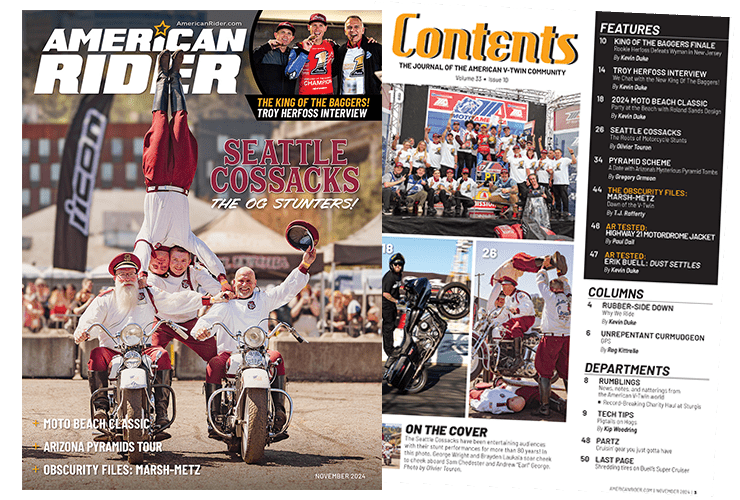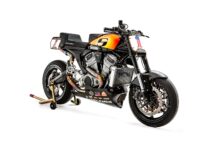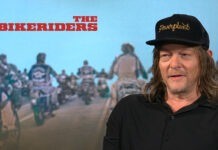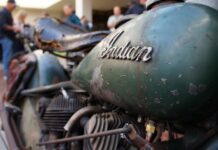The power of the charging system on new Harley Big Twins is roughly double that available on the first alternator-equipped models of 1970. I fear it may not be enough!
You see, even though the capabilities of the alternator have increased substantially, the demands on the system have increased exponentially… potentially, anyway. In the 1970s, for instance, the alternator managed (give or take) some 20 amps with which it kept the battery charged, the engine running and the lights on after dark… and that was about it. That system was fully capable of maintaining its “balance” under those circumstances. Critically important, yet no big deal when that was all there was to it. It was a time before stereo systems, heated clothing and seats and grips—not to mention GPS, iPods, and a host of other do-dads that didn’t exist then, but are now being slathered on new bikes in profusion. Make no mistake, as these devices came to be, the alternator/charging system was steadily upgraded to cope with their addition (especially on touring bikes), but realistically the point has come when you can easily overtax even the most recent 50-amp version… if you don’t understand its capabilities and heed its limitations.
Said charging systems consist of three major components—the alternator, the regulator-rectifier and the battery.
The alternator, with magnets spinning in a metal shell (commonly referred to as a rotor) and the stationary copper wire windings (on a fixture known as a stator), is responsible for producing the initial alternating current (AC) to keep the battery charged and power all of the electrical loads. There are two basic variations in the method with which this is accomplished… so-called single-phase and three-phase. We’ll get into that in a minute.
The regulator-rectifier converts the alternator output from unusable AC power to usable DC voltage. This does not mean your system is designed as a battery charger. The regulator-rectifier’s purpose is to quickly restore the amount of current taken from the battery while starting the engine and then maintain the balance required throughout the system. Ignoring or abusing this simple fact is asking for trouble.
The battery is used to start the bike, and keep electrical components (not the least of these, the ignition and fuel pump) operating at low engine speeds, when the charging system is not really charging anything. The ultimate technique for battery killing is operating too many gadgets at too low an engine speed—and the ultimate regulator/rectifier destruction method is to “bar-hop” with a crap battery.
To calculate your bike’s electrical capacity you need to know the charging output for your particular machine. Stock systems over the years look something like this:
1970–1980 Big Twins = 19 amps
1981–1988 Big Twins = 22 amps
1989–1999 FX/FL Big Twins (Evo Softail) = 32 amps
1999–2003 FXD (and 2000 Softail Twin Cam) = 32 amps
2001–2006 FX/FL Big Twins (Twin Cam Softail) = 38 amps
2004–2006 FXD Big Twins = 38 amps
2007–on FX/FL Softail and FXD Dyna = 50 amps
1995–1996 FLT Big Twins (5-speed Touring) = 38 amps
1997–2005 FLT Big Twins (5-speed Touring) = 45 amps
2006–on FLT Big Twins (6-speed Touring) = 50 amps
1986–2006 Sportsters = 22 amps
2008–on Sportsters = 32 amps
Keep in mind that these are typically peak outputs when the motor is revved to at least normal cruising RPM. At idle the alternator’s output can be much less. This means in stop-and-go traffic with a high load for heated clothing, lights, etc., you will be drawing from your battery, not charging it.
Now, let’s convert those amps into a number that’s far more useful to determine what sort of loads there are on your system and what it’s capable of powering.
Let’s start by saying (for example) the typical Evo alternator will have a 32-amp system, which charges (theoretically) at the following rates:
1000 RPM—15 amps
2000 RPM—26 amps (26 x 13.5v = 351 watts)
3000 RPM—30 amps
4000 RPM—31 amps
5000 RPM—32 amps (32 x 13.5v = 432 watts)
See, the output really depends on the rpm and is a lot less at idle. The formula is simple but can be deceptive; Volts multiplied by Amperes (amps) = Watts.
I believe that 13.5 volts is representative, but even an optimal figure of 14.7 volts (giving the system the benefit of the doubt in terms of efficiency) gives max output at 14.7 x 32 amp capacity = 470 watts. Since almost everything electrical on your bike (from stereo speakers to headlight bulbs) is “rated” in terms of watts, you can figure out… first… what you have to have just to run the bike.
High Beam—60 watts
Low Beam—55 watts
License Plate—5 watts
Brake/Tail/Turn Signal—21 watts (per bulb—approximately)
Instrument Panel—2 watts (per bulb—approximately)
EFI computer—25 watts
Fuel Pump—60 watts
Electronic Ignition—50 watts
An important note here—modern “engine management” is very power hungry. Look at the draw of the three components required just to make the engine run! Checking my math against your reality (mandatory lighting and all), that amount could easily total at least a couple hundred watts. Then—with a little subtraction, you’ll know what’s left over to power your add-ons. On our sample system, that would be nothing at idle, 75–80 watts in motion, and (being generous) perhaps a couple hundred watts wide open—wouldn’t it? The point is, even a small speaker set-up (like H-D’s new Boom) drawing 20 watts per channel, is cutting it close power-wise, while blithely playing tunes in stop-and-go traffic. Add more stuff (like some of the sorts of things in the list nearby) and then tell me whether your particular system will have enough power to operate any/all of these watt-sucking options.
Heated Garments—35–77 watts (per person)
Heated Seat—30–40 watts
Heated Grips—20–30 watts
Passing/Fog/Driving/Aux lights—35–100 watts (each)
Cell Phone—1–3 watts
Radar Detector—1–3 watts
GPS—2–6 watts
Portable Music Player—1–3 watts
And… the aforementioned stereo speakers at anything from 20 watts “per” to 100 or more! (Good reason to stick with “sound” designed for motorcycles, which draws far less than car audio bits.)
Makes you realize why charging system upgrades are a fine idea for power hungry riders, doesn’t it? There are plenty of options out there, to be sure. Between H-D’s own and the aftermarket offerings, you can easily install more powerful charging systems, in 32-, 38-, 40-, 45- and even 50-amp versions, in any alternator-equipped Big Twin. However, be aware that there’s more to it than just adding amps.
A stator with two wires is single-phase and one with three is three-phase; simple as that. The factory has been “phasing in” three-phase systems on Big Twins since 2001 (when in doubt consult your manual or your dealer) and all models have had them since 2006. (Sportsters have only been three-phase since they got EFI in 2007, but are limited to 32-amp systems.) There are enormous differences between a single-phase and a three-phase alternator, even if they are rated for the same maximum amp output.
The huge advantage of a three-phase system is that it will produce far more watts at much lower revolutions than any single-phase system. Here’s how: Alternators make alternating current (AC) power. Simply, the polarity (positive and negative on the rotor magnets) is continuously switching back and forth. When single-phase AC power is rectified it results in pulsing DC power, which falls to zero three times during each cycle. To generate three-phase AC power, three sets of charging coils are used. Each coil is offset 120 degrees, so power delivered by a three-phase circuit pulsates much less, and never falls to zero. For all electrical intents and purposes, the power delivered to the load is the same at any instant. By eliminating the dead spots between pulses, you get a considerable increase in low-speed output as well as a much smoother, consistent charge to the battery. Case in point—a three-phase 50-amp alternator produces more watts (585) at 2000 rpm than the old single-phase 32-amp system will at peak. There’s a peak output of as much as 650 watts or more to be had with the 50-amp three-phase system as well, but obviously the biggest benefit is (pardon the expression) “grounded” in our typical day-in-day-out usage.
Thing is—what if your usage isn’t so typical and you find yourself crowding the electrical limits of your machine? Seems to me, for older bikes, an upgrade to the three-phase system that most closely matches your electrical needs is a no-brainer. For those who already have the latest and greatest yet need more effective power management for accessories, there are some tips that might just do the trick:
- Don’t operate all add-ons all at once. Prioritize!
- In traffic and/or low-speed situations, shut off the biggest power users first.
- Check into the power draw of any accessory in advance, before you overdo it—especially stereo stuff.
- Swap as many lamps and lights as possible for LEDs which, in addition to many other advantages, use one-tenth as much power as standard lighting. (Just an LED swap of one headlight and two passing lamps can save over 110 watts on a Touring bike, which can then be used for more… ah!… “entertaining” gadgets!)
- Don’t guess, keep track of the system in real time—add an ammeter!




















Thanks for the electrical charging write up. I own a 2007 XL883L. I knew it put out 32 amps but I didn’t know it was three phase. Appreciate the info. Thanks
richardcaston60@gmail.com.
I CANT FIND ANY SPEC’S ON MY 2003 TWIN CAM 88 SOFTAIL STATOR AC VOLTAGE OUTPUT ,i HAVE 72000 MILES ON IT..FULL TIME RIDER.iM HAVEING VOLTAGE SPIKES AS HIGH AS 15.75 VOLTS,AND PUTTING OUT CODES.i HAVE ORDERED A NEW OEM REGULATOR WHICH BY THE WAY AT 15.75 VOLTS GOT TO 121 DEGREES.
Thank you for this article. I have a 1998 Heritage and would love to know if I can run a 40 amp voltage regulator with my single phase and will it supply me with more current?